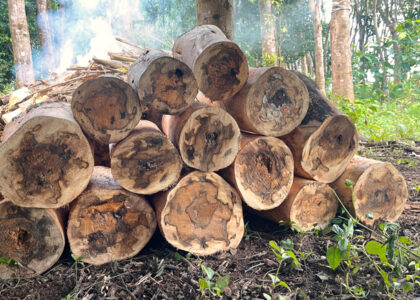Agarwood, known for its distinctive fragrance and high value, has been a sought-after commodity across various cultures for centuries. Its primary use in incense, perfumes, and traditional medicine has contributed to a thriving market. As consumer awareness and preference for natural products grow, the agarwood market is undergoing significant transformations. This article delves into the current trends shaping the agarwood market landscape and examines the factors driving global demand.
Analyzing Current Trends in the Agarwood Market Landscape
The agarwood market is witnessing notable shifts due to the increasing popularity of sustainable and ethical sourcing practices. Consumers are becoming more conscious of the environmental impacts associated with harvesting agarwood, particularly from endangered species like Aquilaria malaccensis. This heightened awareness has prompted stakeholders to explore alternative cultivation methods, such as plantation-grown agarwood, which not only meets demand but also conserves natural ecosystems. As a result, organizations are investing in initiatives to promote sustainable agarwood production, thereby enhancing their market appeal.
Technological advancements are also playing a crucial role in the agarwood market’s evolution. Innovative extraction methods and processing technologies have improved the yield and quality of agarwood products. Techniques such as tissue culture and genetic engineering are being explored to enhance the growth rates of aquilaria species. Furthermore, digital platforms are emerging as vital channels for marketing and sales, allowing producers to reach a broader audience and streamline supply chains. This modernization of the agarwood industry is expected to attract a new generation of consumers who value transparency and quality.
The geopolitical landscape is another factor influencing the agarwood market trends. Regions such as Southeast Asia, which have historically been the primary sources of agarwood, are experiencing regulatory changes aimed at protecting natural resources. Governments are implementing stricter export controls and promoting local production to curb illegal harvesting. As a result, market players must adapt to evolving regulations, which could reshape sourcing strategies and pricing dynamics. These trends underscore the need for a proactive approach in navigating the complexities of the agarwood market.
Global Demand Dynamics: Factors Influencing Agarwood Sales
The global demand for agarwood is significantly influenced by its cultural significance and traditional uses, particularly in regions such as the Middle East and Asia. Agarwood is deeply ingrained in various cultural practices, including religious ceremonies, rituals, and traditional medicine. The increasing interest in holistic health and wellness has further propelled the demand for natural incense and remedies, leading to a surge in agarwood sales. This cultural reverence for agarwood, combined with a growing global market for luxury and artisan products, is driving producers to enhance the quality and availability of their offerings.
Luxury markets, particularly in Asia and the Middle East, are also pivotal in shaping agarwood demand. High-income consumers are increasingly turning to premium agarwood products, including oud oil and artisanal incense, which are often used in high-end perfumery. The association of agarwood with luxury and exclusivity has created a niche market that continues to expand. As more consumers seek unique and authentic experiences, the demand for high-quality agarwood products is expected to rise, further intensifying competition among producers.
Moreover, the rise of e-commerce has transformed the agarwood market by providing a platform for both small-scale producers and larger companies to reach global audiences. Online marketplaces are facilitating direct sales between producers and consumers, reducing reliance on traditional distribution channels. This shift has not only improved accessibility but has also enabled producers to showcase the unique characteristics of their agarwood products. As e-commerce continues to grow, it is anticipated that the global demand for agarwood will expand, driven by increased awareness and appreciation for this exceptional natural resource.
In summary, the agarwood market is experiencing significant changes driven by sustainability, technological advancements, and shifting consumer preferences. As global demand continues to rise, influenced by cultural practices and luxury market trends, stakeholders must navigate a complex landscape shaped by regulatory environments and evolving consumer values. Understanding these dynamics will be crucial for producers and marketers aiming to capitalize on the growing opportunities within the agarwood market. As the industry adapts to these trends, the future of agarwood promises to be both sustainable and prosperous.




